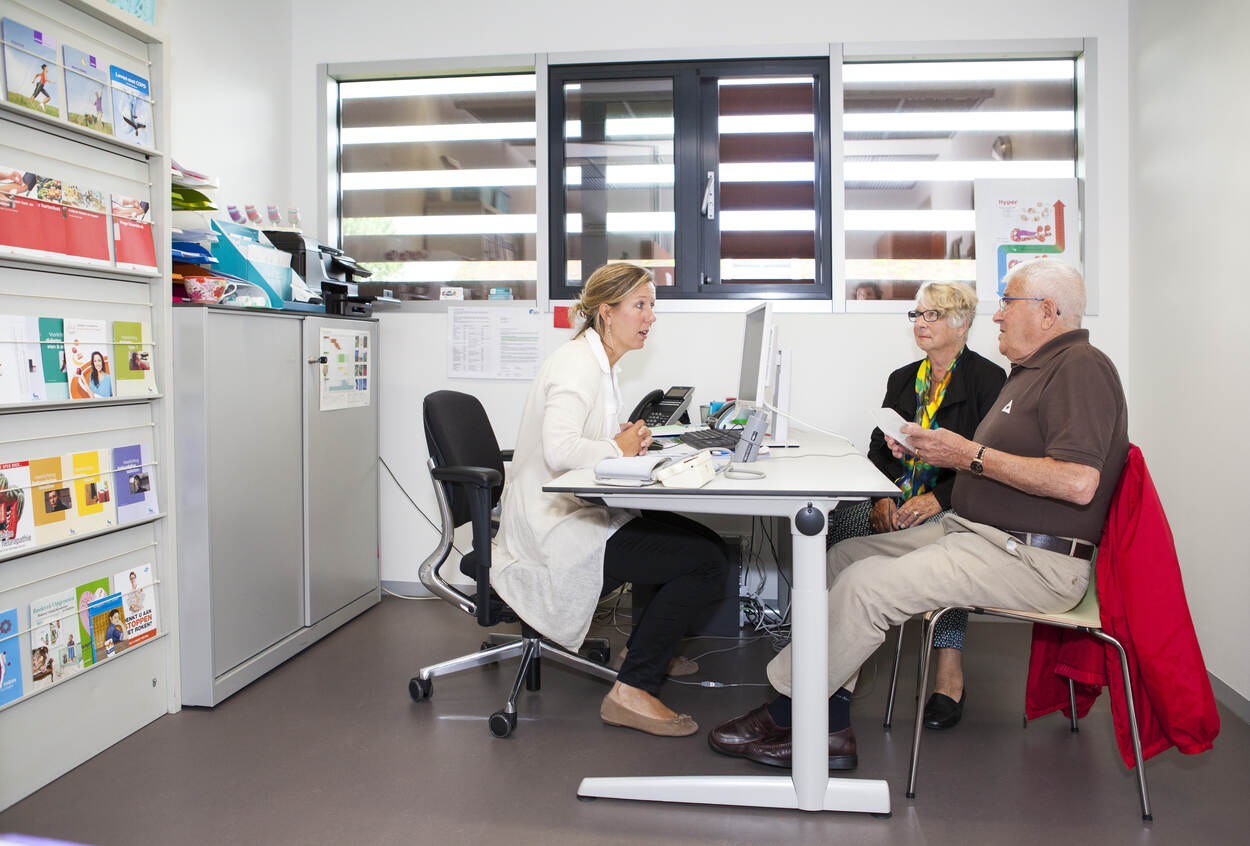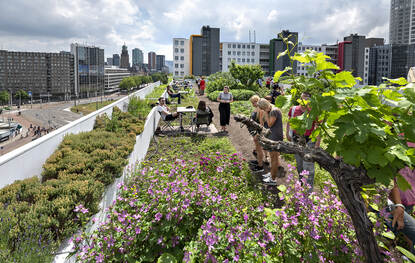Healthcare represents 7% of greenhouse gas emissions in the Netherlands. The Green Deal on Sustainable Healthcare aims to significantly reduce this percentage. What does that mean in actual practice? We talked to RIVM researcher Michiel Zijp and general practitioner Iris Wichers.
'From hospital, to care home, to insurance company: each stakeholder sets its own goals'
'If you switch nine patients to a powder-based inhaler, it saves even more than trading your petrol-fuelled car for an electric model'
More than 300 organisations have signed the Green Deal on Sustainable Healthcare since 2018. “There is a growing awareness,” Zijp states. “New registrations keep coming in. From hospital, to care home, to insurance company: each stakeholder sets its own goals. The Green Deal often intensifies initiatives that had already been launched in the workplace. Conversely, although signing a Green Deal is voluntary, signatories can be held accountable for those commitments within their own organisations.”
“The Netherlands ultimately aims to reduce CO2 emissions by 49% in 2030, compared to 1990 levels,” Zijp explains. “We will not get there by implementing a few changes in construction and transport. This really is a serious transition.” Reducing carbon emissions, which is Zijp’s primary focus, is one of the four targets defined in the Green Deal on Sustainable Healthcare.
Ensuring sufficient knowledge
RIVM has been mandated by the Ministry of Health, Welfare and Sport (VWS) to ensure that sufficient knowledge is available. “There are five types of activities to increase sustainability,” Zijp says. “First we look at hotspots: important priorities to focus on right now. In that context, we also look at what factors can be influenced by organisations directly, without much assistance. Examples include more bicycles, fewer lights switched on, or more efficient air exchange systems in hospital operating rooms. Is it absolutely necessary to have all those systems on standby constantly? In addition, more sustainable practices can be achieved by drafting criteria and requirements for the sustainability of products and services: socially responsible procurement.
Third, the majority of emissions related to many products, including ICT resources and many medications, occur during production. More sustainable practices can be achieved by using products for longer and by comparing alternatives based on emissions across the entire life cycle, including production.”
Chain-based approach
“Fourth, there are situations in which sustainable alternatives are not readily available to individual care institutions. Involving medicines, for example. How can we organise this more effectively and encourage companies to take part? A chain-based approach has been designed to deal with pharmaceutical residues: from producer to user to waste management facility, all parties in the chain working together to consider the system as a whole. The same thing could be done for the carbon footprint of medications.” Finally, increasing public awareness is also an important activity. “The care sector and physicians have an important voice in society, not least as ambassadors. If a doctor running a general practice states, from a climate change perspective, that asthma treatment with a pressurised metered-dose inhaler should be replaced by a more sustainable powder-based inhaler, then you are communicating that we can combat climate change together.”
Tips for sustainable GP practice
That does not happen automatically, says Wichers, herself a general practitioner, as well as a member of the scientific staff at the Dutch College of General Practitioners (NHG), where she focuses on sustainability. “Doctors already have a lot on their plate. Even so, they do feel that they could play a role – but they lack knowledge and tips, subsidies and support. The Association of Dutch General Practitioners (LHV) and the Dutch College of General Practitioners (NHG) therefore developed an e-book for GPs, providing support in making their practices more sustainable.”
An extra perspective
Sustainability is increasingly relevant in the doctor’s office as well. “Because I know more about this topic now myself, I also mention it in conversations,” Wichers says. “Not to admonish others. As a doctor, I now also consider cases in the context of climate. That is possible, because climate problems and health overlap. Someone told me they wanted to stop needing to take diabetes medication. ‘Then you need to lose weight,’ I told him. It turned out that he almost exclusively ate meat. Eating a more varied diet and less meat not only benefits his health, but also helps the climate. It gives me an extra perspective to incorporate. Not just in individual cases, but also when deciding which medicines we do or do not use.”
In the context of the asthma inhalers, for example, the choice is not based on effectiveness, Wichers says. “The guidelines indicate that the two forms are equivalent. It does have a major effect on emissions. The standard pressurised aerosol inhalers release large quantities of a specific type of powerful greenhouse gas, and total use is significantly boosted by the increasing number of asthma patients worldwide.” Switching to an inhaler that contains dry powder has a huge impact. “Obviously, this is always done in consultation with the patient. But if you switch nine patients to a powder-based inhaler, it saves even more than trading your petrol-fuelled car for an electric model.”
Dilemmas
As a knowledge institute, RIVM wants to present good solutions. Data analysis is vitally important in that context. “What we run into is that a lot of data is not yet available, or is incomplete,” Zijp explains. “What are all the different kinds of care that we procure? That question has not been asked before. Effectively defining a course does require answers to questions like that. On the other hand, some things are self-evident, so we can get started right away.” Wichers agrees wholeheartedly. “Start small and it will automatically turn into a competition to be the best. A significant majority of people in the Netherlands also want to make an effort. Even so, it is up to administrators, healthcare officials and the government at this point. We can take small steps in the doctor’s office, and that is important too. But it is just like smoking: it is far more effective if the government gets more involved.”








